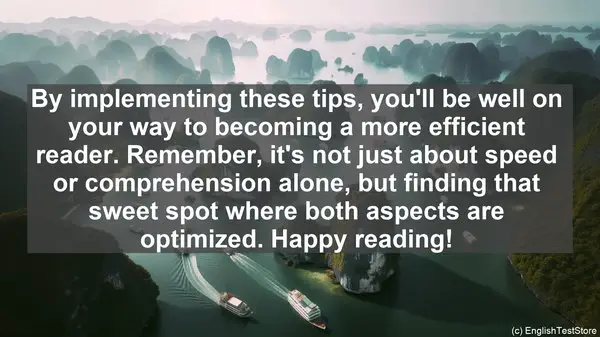Introduction: The Importance of Balancing Speed and Comprehension in Reading
As students, we often find ourselves struggling to strike the right balance between reading quickly and understanding the content. In this video, I’ll be sharing 10 essential tips that can help you become a more efficient reader. Let’s dive in!
1. Skim Before You Dive In
Before starting to read a text, take a quick glance at the headings, subheadings, and any highlighted or bolded text. This will give you a general idea of the content and help you create a mental framework for what you’re about to read.
2. Highlight Key Points
While reading, use a highlighter or underline important sentences or phrases. This not only helps with comprehension but also makes it easier to review the material later on.

3. Practice Active Reading
Don’t just passively read the words on the page. Engage with the text by asking yourself questions, making predictions, or summarizing what you’ve read so far. This keeps your brain actively involved and enhances comprehension.
4. Break It Down
If you come across a complex sentence or paragraph, break it down into smaller parts. Read each section carefully, ensuring you understand it before moving on. This prevents confusion and ensures you grasp the overall meaning.
5. Build Vocabulary
A strong vocabulary is crucial for efficient reading. Make it a habit to learn new words regularly. This not only improves comprehension but also helps you read faster as you won’t have to pause to look up unfamiliar words.
6. Use Context Clues
When encountering an unfamiliar word, don’t immediately reach for the dictionary. Often, the surrounding words or the overall context can give you a clue about the word’s meaning. Try to infer it before resorting to external sources.
7. Practice Time Management
In exams or time-bound situations, managing your reading time is crucial. Set a pace that allows you to cover the material thoroughly while also leaving enough time for other sections or tasks.
8. Read Diverse Material
To become a well-rounded reader, expose yourself to a variety of texts. This could include fiction, non-fiction, articles, essays, or even online content. Each type of text has its own nuances, and by reading widely, you’ll become more adaptable and versatile.

9. Join a Reading Group or Club
Discussing what you’ve read with others can be incredibly enriching. Joining a reading group or club not only exposes you to different perspectives but also helps you analyze and interpret texts in a collaborative setting.
10. Practice, Practice, Practice
Like any skill, reading requires practice. Set aside dedicated time each day for reading. Start with shorter texts and gradually work your way up to more complex ones. With consistent effort, you’ll see significant improvement over time.
